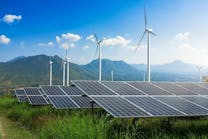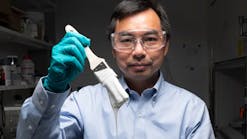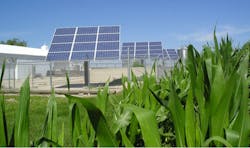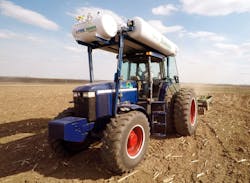Over the years, much has been written in HPAC Engineering about net zero energy (NZE) buildings. Many of us have seen the statistics about how buildings produce nearly 40 percent of greenhouse gas (GHG) emissions. But surprisingly, that same data also notes that farms are responsible for nine percent of total GHG emissions.
Of course, as we have learned from some of our elected officials, much of that comes from cow (and other livestock) burps and farts. The rest of it, however, comes from burning fossil fuels for energy to grow, process, and distribute food and fertilizer.
At least one Iowa farm is trying to reduce that portion of its carbon footprint.
In 2008, Jay Schmuecker, an MIT educated engineer who retired from NASA’s Jet Propulsion Lab, and the owner of the Pinehurst Farm in Earlham, IA, decided to create a solar-powered hydrogen system for his farm.His idea was to use grid-tied solar PV to run ammonia and hydrogen generators and pumps, in order to produce tractor fuel and fertilizer. The project was launched in 2009, with the installation of a one-tenth scale demonstration plan using three solar arrays. The nearby Hydrogen Energy Center, in the business of modifying internal combustion engines to run on alternative fuels such as hydrogen, agreed to provide the hydrogen-burning tractor engine with ammonia backup. The tractor was completed, using a used 7810 John Deere tractor and a Ford 460 engine, in 2014. It is capable of running at full power for six hours, burning either pure hydrogen or a hydrogen/ammonia mixture.
Simultaneously with the tractor being built, an old hog shed on the farm was modified to house the operational equipment and garage the tractor. According to Schmuecker, the system uses 14 kWh to produce 1 L (0.26 gal) of ammonia. Since 1 L of ammonia has an energy content of 3.8 kWh, the overall efficiency is approximately 27 percent. By comparison, a typical diesel engine is approximately 30 to 35 percent efficient. Of the 14 kWh consumed to produce the 1 L of ammonia, approximately 9 kWh is used for hydrogen production, 3.5 kWh for nitrogen production (ammonia is NH3, or nitrogen and hydrogen), and 1.5 kWh to generate the ammonia.
After demonstrating his system to some Department of Energy personnel last year, Schmuecker was invited to present to an ARPA-Energy program. He has also received interest in his system – which produces the hydrogen and the ammonia, used for both fuel and fertilizer, using only solar with no carbon emissions – from farmers in the U.S. and many other countries. Carbon-free farming could be a game-changer as we look for solutions to our climate crisis.
A regular contributor to HPAC Engineering and a member of its editorial advisory board, the author is a principal at Sustainable Performance Solutions LLC, a south Florida-based engineering firm focusing on energy and sustainability. He can be reached at [email protected].











